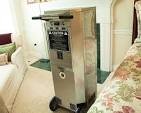Heat Treatment for Bed Bugs: The Complete Guide to Effective Eradication

Heat treatment for bed bugs is one of the most reliable and chemical-free ways to eliminate these stubborn pests. Bed bugs are experts at hiding in cracks, furniture seams, and even behind walls. They’re also becoming resistant to many common insecticides, which makes traditional treatments less effective.
The good news? Heat kills bed bugs at all life stages—including eggs—when applied at the right temperature for long enough. In this guide, we’ll explain:
- The temperatures that kill bed bugs and their eggs
- DIY heat treatment options
- Professional whole-room heat treatments
- Preparation tips to avoid damage and maximize results
- The pros and cons of heat compared to other methods
1. What Temperature Kills Bed Bugs?
Bed bugs die when exposed to certain temperatures for specific lengths of time.
| Bed Bug Stage | Temperature | Exposure Time Needed |
|---|---|---|
| Adults & Nymphs | 113°F (45°C) | 90 minutes |
| Adults & Nymphs | 118°F (48°C) | 20 minutes |
| Eggs | 118°F (48°C) | 90 minutes |
| All Stages | 122°F (50°C+) | Instantly lethal |
⚠️ Important: Heating a room to just 100°F (38°C) won’t work—it may even speed up reproduction. The heat must reach the places bed bugs hide (inside walls, under baseboards, in furniture joints), not just the room’s air.
2. DIY Heat Treatment Methods
A. Laundry & Dryers
One of the easiest ways to kill bed bugs in clothing, bedding, and fabrics:
- Wash on hot water (118°F/48°C or higher) for 30+ minutes.
- Dry on high heat (140°F/60°C) for at least 30 minutes.
- Place non-washable items (stuffed toys, shoes) directly in the dryer.
- Transport items in sealed bags to avoid spreading bugs.
📷 Suggested image: Clothes being placed in a dryer with caption “Laundry heat treatment for bed bugs.”
Alt text: heat treatment for bed bugs using dryer
B. Steam Cleaning
Best for mattresses, box springs, upholstered furniture, and carpets.
- Surface temperature must reach 160–180°F (71–82°C).
- Move nozzle slowly: 10–30 seconds per foot.
- Use dry steam machines (200°F+ capacity).
- Avoid high-pressure steam—it can blow bed bugs around.
📷 Suggested image: Technician steam cleaning a mattress.
Alt text: steam cleaning as a heat treatment for bed bugs
C. Portable Heat Chambers
Good for items that can’t go in a dryer: luggage, books, electronics.
- Commercial products: PackTite, ZappBug Oven.
- DIY option: insulated box + heater + fans (monitor temp with thermometer).
- Maintain 120°F+ for several hours.
3. Professional Whole-Room Heat Treatments
When infestations spread throughout a home, pros use industrial heaters.
- Process: Rooms are heated to 120–140°F (49–60°C) using propane or electric heaters + fans.
- Duration: 4–8 hours, depending on clutter, size, and cold spots.
- Monitoring: Technicians place thermal sensors to ensure all areas reach lethal temps.
- Cost: Typically £400–£4000.
- Pros: Fast, chemical-free, kills all stages in one treatment.
- Cons: Expensive, risk of damaging heat-sensitive items, no residual protection.
📷 Suggested image: Industrial heaters inside a room for bed bug treatment.
Alt text: professional heat treatment for bed bugs in a home
🔗 Internal link idea: “Compare costs with our guide on [Bed Bug Extermination Prices].”
🔗 Outbound link idea: See the EPA guide on bed bugs for professional recommendations.
4. Preparing Your Home for Heat Treatment
Proper preparation prevents damage and increases success:
- Remove: pets, plants, candles, aerosols, medications, delicate items (vinyl records, heirlooms).
- Disconnect electronics (wrap TVs in blankets if not removed).
- Open drawers, cabinets, closets, and unstack mattresses for better heat penetration.
- Declutter carefully—clutter can trap heat but also create cold spots.
5. Cold Treatment for Delicate Items
If heat might damage items:
- Freeze at 0°F (-18°C) for 4+ days.
- Industrial freezers work faster; home freezers need longer.
- Always bag items before freezing to avoid moisture damage.
6. Pros & Cons of Heat Treatment
Advantages:
- Kills all life stages (including eggs)
- Chemical-free, safe for kids and pets
- Fast results (hours to a day)
- No resistance developed by bed bugs
Disadvantages:
- Expensive (whole-home treatment)
- Risk of damage to sensitive items
- No residual protection (reinfestation possible)
- Requires professional expertise for success
7. Integrated Pest Management (IPM)
Because heat leaves no residual effect, experts recommend pairing it with other methods:
- Apply desiccant dusts (like CimeXa) after treatment for long-term control.
- Use moderate heat (90–95°F) or CO₂ to lure bed bugs into treated areas.
- Regularly monitor with traps or interceptors.
🔗 Internal link idea: “Learn more in our guide: [What Is Integrated Pest Management for Bed Bugs?].”
Conclusion: Choosing Heat Treatment for Bed Bugs
Heat treatment for bed bugs is one of the most powerful ways to eliminate infestations quickly and without chemicals. Whether you tackle small items with a dryer, use steam for targeted areas, or hire professionals for whole-room heat, this method is proven to kill adults, nymphs, and eggs.

For small infestations, DIY heat methods may be enough. For larger infestations, whole-home professional heat treatment is the fastest and most reliable option. To prevent reinfestation, combine heat with ongoing IPM strategies like dusts, traps, and careful monitoring.
By preparing properly and choosing the right method, you can finally reclaim your home and enjoy a bed bug-free environment.




